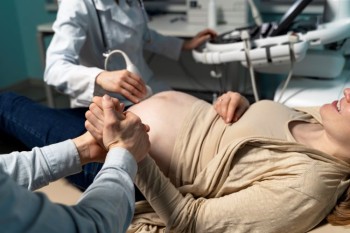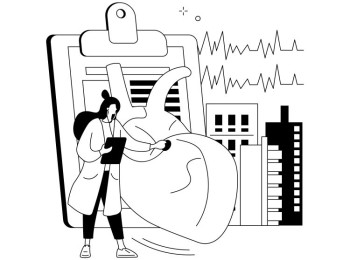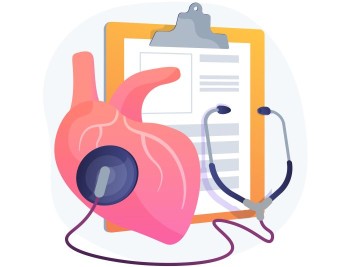
2D Echo with Global Longitudinal Strain (GLS) has emerged as a crucial diagnostic tool in cardiovascular medicine, providing detailed insights into cardiac function.
2D Echo with GLS (Global Longitudinal Strain) in India with Cost
2D Echo with Global
Longitudinal Strain (GLS): A Comprehensive Exploration
Introduction
2D Echo with Global Longitudinal Strain (GLS) has emerged as a crucial diagnostic tool in cardiovascular medicine, providing detailed insights into cardiac function. In this article, we unravel the intricacies of this advanced echocardiographic technique.
Understanding 2D Echo with GLS
What is 2D Echo with GLS?
2D Echo, or two-dimensional echocardiography, is a non-invasive ultrasound-based imaging technique that captures real-time images of the heart. When coupled with Global Longitudinal Strain (GLS), it becomes a powerful tool for assessing the deformation of heart muscles and identifying subtle changes in cardiac function.
Significance of GLS
Assessing Myocardial Deformation
GLS measures the percentage change in length of the myocardium during the cardiac cycle, offering valuable information about the contractility and deformation of the heart muscles.
Early
Detection of Cardiac Dysfunction
GLS is particularly effective in detecting cardiac abnormalities at an early stage, enabling timely intervention and management.
The Procedure
Conducting a 2D Echo with GLS
During the procedure, a transducer is placed on the chest, emitting sound waves that create detailed images of the heart. GLS analysis involves tracking specific points in the myocardium to assess deformation.
Duration and Patient
Experience
A typical 2D Echo with GLS takes approximately 30 to 60 minutes. Patients may experience slight discomfort from the gel applied to the chest, but the procedure is generally well-tolerated.
Advantages of 2D Echo with GLS
Comprehensive Cardiac Assessment
2D Echo with GLS provides a more comprehensive evaluation of cardiac function compared to traditional echocardiography, allowing for a more nuanced diagnosis.
Sensitive Detection of Dysfunction
GLS is highly sensitive to subtle changes in myocardial function, making it a valuable tool for early detection of cardiac dysfunction, even before symptoms manifest.
Challenges and Considerations
Operator Skill Dependency
Interpreting GLS data requires expertise, and results can be influenced by the skill and experience of the operator.
Limited Availability
While 2D Echo is a standard procedure, not all healthcare facilities may offer GLS analysis. Access to this advanced feature may vary.
Post-Procedure Care
Interpreting Results
Cardiologists analyze the images and GLS values to provide a comprehensive assessment of cardiac function. Follow-up consultations may be scheduled based on the findings.
Incorporating GLS into Treatment Plans
Positive GLS findings may prompt adjustments to medication or lifestyle changes to manage and improve cardiac function.
Conclusion
2D Echo with Global Longitudinal Strain is a remarkable advancement in cardiac imaging, offering unparalleled insights into myocardial deformation. Its role in early detection and comprehensive cardiac assessment makes it a valuable tool in modern cardiology.
FAQs About 2D Echo with GLS
1. Is 2D Echo with GLS safe for all age groups?
Yes, 2D Echo with GLS is generally safe for individuals of all age groups. Its application may vary based on clinical indications and the need for cardiac assessment.
2. How often should one undergo a 2D Echo with GLS?
The frequency of 2D Echo with GLS depends on individual health conditions. It is typically recommended for individuals with known cardiac issues or those at risk of developing heart-related problems.
3. Are there any risks associated with 2D Echo with GLS?
This process is deemed secure, posing minimal risks. It is non-intrusive and doesn't subject patients to ionizing radiation.
4. Can 2D Echo with GLS replace other cardiac imaging techniques?
While powerful, 2D Echo with GLS is often used in conjunction with other imaging modalities to provide a comprehensive assessment of cardiac health.
5. How soon can results from a 2D Echo with GLS be obtained?
Results are typically available shortly after the procedure, allowing healthcare providers to promptly assess and discuss findings with patients.
6. Can 2D Echo with GLS detect all types of heart conditions?
While 2D Echo with GLS is highly sensitive, it may not detect certain heart conditions. It is essential for your healthcare provider to consider various diagnostic tools for a comprehensive evaluation.
7. Is there any preparation required before a 2D Echo with GLS?
Typically, no specific preparation is needed. However, follow any instructions given by your healthcare provider, which may include fasting for a few hours before the procedure.
8. Are there any restrictions after undergoing a 2D Echo with GLS?
There are usually no restrictions post-procedure. Patients can resume their normal activities immediately. However, individual cases may vary, so follow any specific guidance provided by your healthcare team.
9. Can 2D Echo with GLS be performed during pregnancy?
While echocardiography is generally considered safe during pregnancy, the necessity of 2D Echo with GLS should be carefully evaluated, considering potential alternatives with lower risk.
10. How long do the results of a 2D Echo with GLS remain valid?
Results are indicative of your cardiac condition at the time of the procedure. Regular follow-ups may be recommended, especially if there are changes in health status or new symptoms emerge.
(0)
Login to continue



